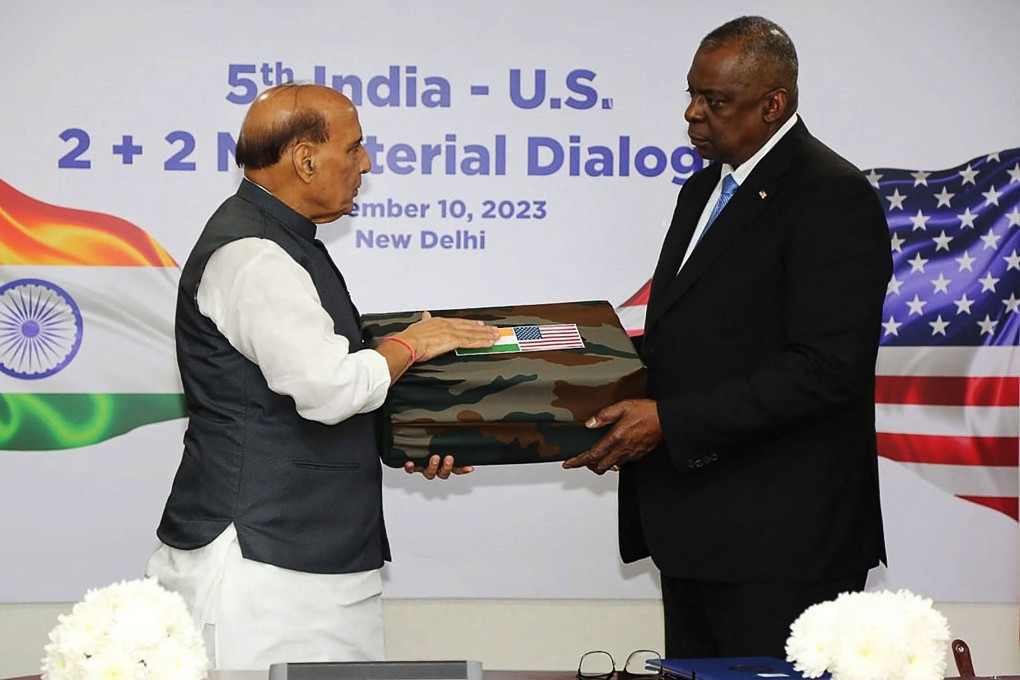As Joe Biden deepens India ties to counter China, Donald Trump’s possible return looms over US ally
- At ‘2+2’ talks in New Delhi, the democratic allies pull closer as an agreement is reached for US and India to co-produce armoured combat vehicles
- If he returns to the White House, Trump has vowed to introduce an ‘automatic’ 10 per cent tax on all imports into the US

What began with a tight bear hug between defence chiefs of the United States and India on Thursday concluded with the further expansion of the two countries’ security partnership in the face of common rival China in the Indo-Pacific and beyond on Friday.
At the “2+2” US-India ministerial consultations, which brought together top diplomats and defence heads in New Delhi, the two sides agreed to discuss co-production of Stryker armoured vehicles amid tensions along India’s disputed Himalayan border with China. The move will also help India reduce its historic dependence on Russian weapons.
“An initial offer on the infantry combat vehicles has come from the US. We have expressed our interest in discussing it further to take the co-production part ahead,” senior Indian defence official Giridhar Aramane said on Friday.
The Stryker is a family of eight-wheeled armoured vehicles that can transport infantry and use different weapons, engineering and electronic systems.
“In the face of urgent global challenges, it’s more important than ever that the world’s two largest democracies exchange views, find common goals and deliver for our people,” US Defence Secretary Lloyd Austin said before Friday’s meeting, adding that the countries were integrating their “industrial bases, strengthening our interoperability and sharing cutting-edge technology”.
